Corylus avellana L.
Common hazel
The tree tag number relates to the black tree-maintenance tags, usually fixed on the trunk, 2 to 3m above ground level.
Also included here: C. avellana ‘Contorta’ and C. avellana eg ‘Reg Majestic
Contorted hazel and red hazel
The common hazel once covered Ireland almost from shore to shore some 9000 years ago. It replaced the birch which was the first tree to colonise Ireland after the retreat of the ice sheets of the last ice age. Its heyday was short lived, as, in turn, it was shaded out by the much larger oak and elm. Woodlands of hazel still remain in a few limestone areas of Ireland such as the Burren and in Fermanagh.
The male flowers are long pendulus catkins, very obvious in March. The tiny female flowers are much harder to see, although their striking red stigmas give them away. Hazel will grow into a small single-stemed tree, but is more usually seen multi-stemmed. It sprouts very freely from the base and in traditional woodland management hazels are coppiced to produce poles for a wide range of agricultural and domestic purposes.
Several horticultural cultivars are available. There are several red-leaved forms. These are easily confused with the more common red forms of the filbert (Corylus maxima). Also common is the contorted hazel (Corylus avellana ‘Contorta’) of which there is also a red form. These contorted hazels are grafted onto ‘normal’ rootstock, which in the nature of hazels throw up a lot of non-contorted shoots. If these are not removed they will out-compete the contorted branches and the original plant will suffer.
In Belfast Botanic Gardens there are several hazels including common, purple and contorted, in the spring garden under the large silver maples at the south end of the herbaceous borders.
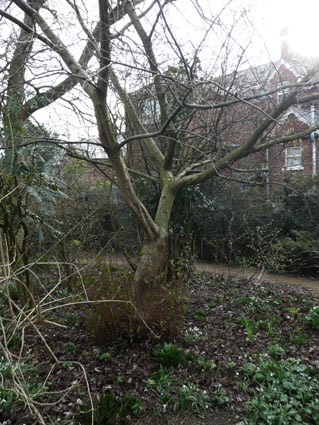

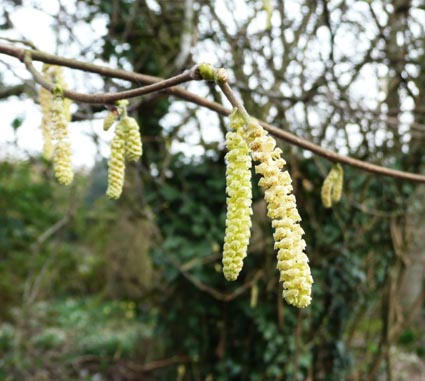
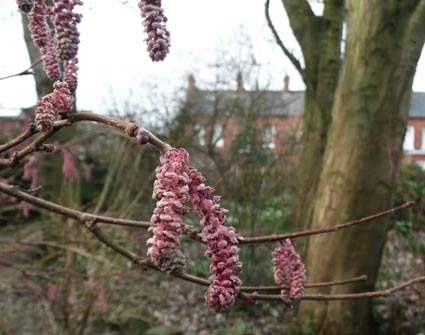
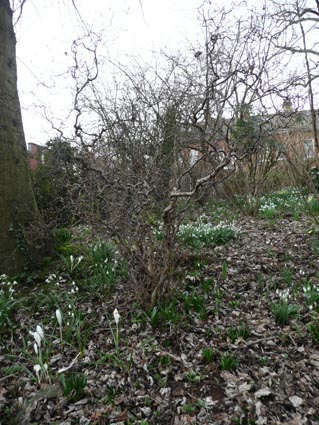
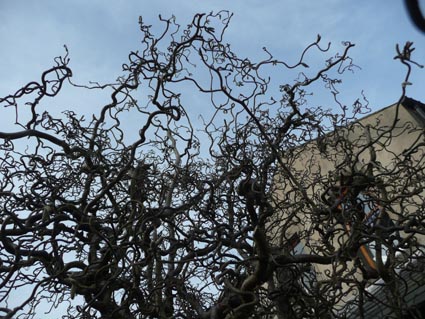
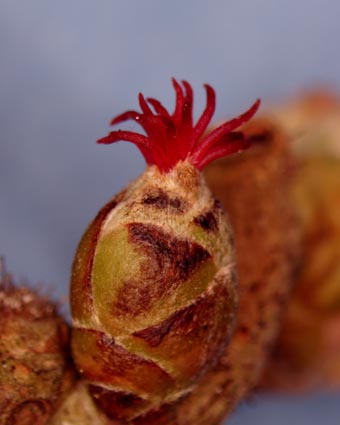
Photos taken in Belfast Botanic Gardens in 2013. Copyright: Friends of Belfast Botanic Gardens.
